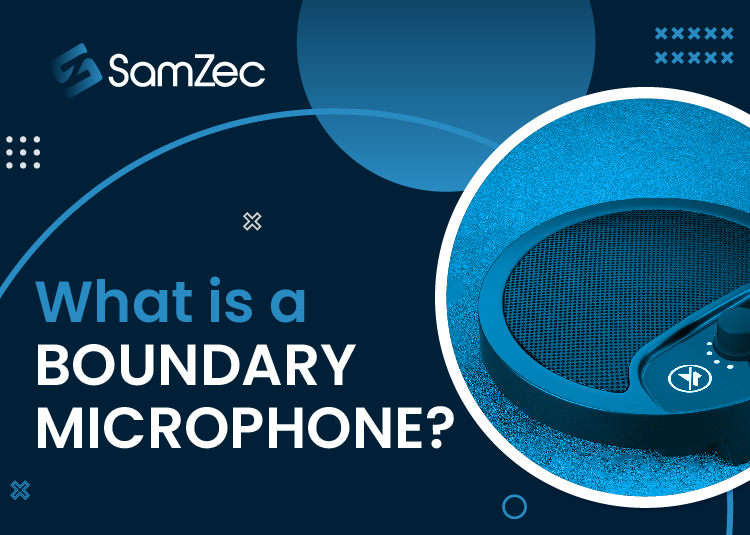A boundary microphone is a type of microphone used to monitor a sound source within proximity to the microphone. Boundary microphones are often used in recording studios, live sound, video conferencing, theater, and audio production.
They are placed on or near a boundary, such as a wall or a floor, to pick up sound reflections. It helps to reduce feedback and improve the quality of the sound. Most boundary microphones are designed to be placed on a desk or table between the sound source and the microphone.
How does a boundary microphone work?
Boundary microphones work by capturing a sound emitted across a boundary plane. For example, imagine a surface such as a table or flat wall, and imagine that sound emitted from a source at the left side of the plane.
A boundary microphone will then capture that sound. Unlike a conventional microphone that captures the only sound localized in front of it, the sound will be charged from the entire plane of the boundary surface.
Boundary microphones work best when used in the studio or on a stage. They allow the user to listen in on a conversation simultaneously as they are talking to one or more people. It is accomplished by connecting the microphone to a preamp and then connecting it to the source you want to listen to. The preamp amplifies the sound and sends it to a speaker.
As an added safety measure, a small speaker outside of the microphone’s range is also connected to the preamp so that the microphone cannot hear what is being said if you are talking to someone outside of the content at the same time. The mic and speaker can be plugged straight into a recorder or a mixer.
Read more: How to setup multiple monitors for trading
What are the types of boundary microphones?
There are two different types of boundary microphones. One is the wireless boundary microphone, and the other is the line of sight boundary microphone.
Wireless boundary microphone:
A wireless boundary microphone is a device that transfers sound between two places without wires. Instead, the device uses radio waves to transmit sound, and when the sound waves hit an object, they bounce back. It allows the microphone to pick up the sound without cables, wires, or audio adapters.
Line of sight boundary microphone:
The line of sight boundary microphone is a device that can be used for surveillance purposes. A microphone provides sustainable audio surveillance, which a listener cannot pick up. The technology it employs is ultrasonic waves which are strong enough to transmit audio signals through hard surfaces.
What is the range of a boundary microphone?
The range of a boundary microphone depends on the frequency range that it is designed to record. For example, an omnidirectional boundary microphone designed to record frequencies between 20 and 20,000 Hz will not be able to pick up higher or lower sounds than that if its frequency range is 20Hz-20,000Hz. On the other hand, if the frequency range is 20Hz-800Hz, the microphone will pick up sounds up to 8kHz.
Advantages of boundary microphones
- Boundary microphones are a great tool to use to capture sound from a specific location.
- These microphones are often used in recording studios and voiceover artists to create quality recordings.
- The boundary microphones can be used for voiceover recordings, podcasting, and voiceover narrations.
- These microphones are used to record sound from a specific location and are often used in recording studios and voiceover artists.
- Boundary microphones are an excellent option for video conferencing as well.
Conclusion:
We hope you enjoyed our blog post about what a boundary microphone is. A boundary microphone is a device that helps to isolate the sound of a conversation or a conversation that would otherwise be difficult to hear in a noisy space. It is a helpful device to have in any office setting where many people need to get their work done.
FAQs
Are boundary microphones omnidirectional?
A boundary microphone is not an omnidirectional microphone. Instead, a boundary microphone is a directional microphone designed to be used in a specific area. So, for example, you can get a boundary microphone that allows you to capture sound from in front of you or all around you.
How do you use a boundary microphone?
There are two ways a boundary microphone can be used. The first is to place it in the center of the room to pick up the sound from the speaker and mic. The second way is to put it in the back of the room or on a table or shelf and then point the mic in the voice’s general direction.




















